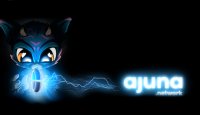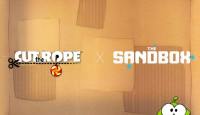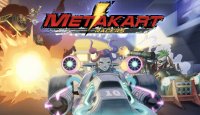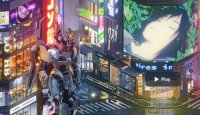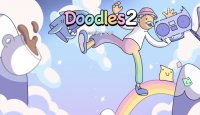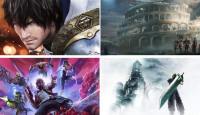
On November 26th, MixMarvel CSO Mary participated in the 35th issue of the online public course organized by WANXIANG Blockchain Labs. She gave a speech on “The digital world is becoming more and more popular, how will blockchain games develop?”. Mary also showed users the upgraded game ecosystem that MixMarvel is currently building.
The following is a collection of the brilliant viewpoints that CSO Mary shared during the live broadcast:
Today I am delighted to share how blockchain and games are combined. Since 2017, everyone has paid great attention to the blockchain games industry. Still, after two or three years of exploration, it has not reached its ideal state. But we still feel that this is a direction that is worth exploring. Today I will introduce you to how we view this industry.
Let me first introduce our team. MixMarvel is a team of senior gamers. Several of the leading creators are from the French Mobile game company Ubisoft, Ninth City, South Korean game company T3 Entertainment, and other major game companies. We have established independent studios and have done the game publishing business in 83 regions worldwide, reaching Top-1 in 61. We entered the blockchain industry in 2017. This opportunity makes us very excited because every technological change has brought the game industry’s growth dozens of times.
Since the 1970s, games have gradually replaced traditional entertainment methods and become a brand-new entertainment. From Tamagotchi to Handset games, from game consoles to computers, with the exponential improvement of computer hardware performance, more and more excellent games have been born. A world-connected user interface has been gradually constructed. As practitioners in the game industry, we are very excited about these developments in the virtual world. We are also very committed to providing users with more and more immersive digital experiences. Today, there are more than 2.4 billion game users worldwide. Through mobile phones, computers, and other devices, people can enter this virtual world anytime, anywhere. The following picture shows a scene in “Wreck-It Ralph,” which is very emotional to replay the entire game industry’s continuous development and extension from arcade games to virtual worlds.

With the further development of science and technology, what will this new world’s social form look like? Will the creator be ruling the world like multiplayer online games? Or will the world be monopolized by a super-sovereign oligarch as depicted in the science-fiction novel “Cyberpunk”? Or is the world governed by the game lovers, as in the movie “ReadyPlayerOne”?

We cannot foresee the future altogether. But thanks to our experience and the in-depth knowledge of the gaming and blockchain industries, we are more and more confident that as the blockchain technology matures and the game industry’s business environment transforms, the assets in the game will no longer be subject to individual giant companies. It will genuinely become personally owned by users. The social form of this virtual new world will become more distributed and self-organized.
From NFT to DAO: Blockchain empowers the parallel world of games
When talking about NFT, we have to mention Cryptokitties, a phenomenon-level product. In 2018, the popular game Cryptokitties allowed us to discover a new possibility for the combination of blockchain and games. To ensure the decentralization of games through blockchain technology, no organization can modify game rules at will. This measure prevents players from encountering the situation faced by 16-year-old Ethereum co-founder Vitalik: game developers changed the rules at their will, and player protests were considered invalid.
In the blockchain world, players’ ownership of game assets is guaranteed through NFT (Non-Fungible Token), rather than data stored in centralized game developers’ servers. It is an on-chain asset and is also traceable and features such as fluidity and programmability. The DAO (Decentralized Autonomous Organization) guarantees the community’s right to formulate the game rules. The rules of the game are developed based on consensus and are automatically executed through Smart Contract. Even the game creator cannot modify or close it in violation of the agreement.

Users’ ownership of valuable assets and items in the game became the first change after the game and the blockchain combining. With further development, we see more and more open types of sandbox games. For instance, since its release in 2009 to the present, Minecraft, the mainstream sandbox game, has achieved outstanding high-profile achievements. For example, as shown in the picture below, it is a work of art by Japanese artist Tokura, created in “Minecraft.” Simultaneously, many other artists and studios can use the creative and economic tools provided by the “Minecraft” Marketplace platform to develop and obtain financial returns. “Minecraft” does not set direct tasks or goals for players. It is open and free enough and focuses on creativity. Players can use their imagination at will, collect materials and resources in the game, fight hostile creatures, and use them. Various materials are used to create buildings or works of art to form a creative community.

Therefore, in Minecraft, users can open their minds to develop and realize their creativity. Then another virtual world game, Second Life, which has become a legend, focuses more on building a virtual economy. Players become “residents” in the game, wander around, meet other residents, socialize, participate in individual or group activities, and exchange virtual assets and services. Second Life issued Linden Dollar, the virtual asset on the platform. Residents can create new goods or provide services and then buy and sell in Second Life’s virtual world. Residents can exchange real-world currencies such as dollars into Linden Dollar on currency exchanges. One of the most famous examples is”An She Zhong,” the virtual avatar. She successfully developed real estate in Second Life and became the first millionaire coming out of a virtual world game.

Although these worlds are already vibrant, why have we not reached the state we want now, the real virtual world? Mainly, there are many monopolistic behaviors and some unfair and opaque problems in the real world. Not only we do think so: Tim Sweeney, the CEO and founder of Epic Game, announced in July 2020 that Epic app store permanently reduced the platform share ratio to 12% and called on the game industry to reflect on the fact that platforms such as App Store, Google Play, and other media have consistently charged 30% of the share fee. On this basis, it collects promotion through the bidding advertising system. At the same time, it also uses monopoly status to crack down on competition. Does this inhibit the long-term development of the industry? It can be seen that there are several crucial factors to realize a real virtual world. The first is to have excellent pioneers. Second, there are equitable mechanisms and governance. Technology, like blockchain, which is doing the affirmative action movement, can emerge and be applied.
Simultaneously, suppose all the rules can be open and transparent. Only, in that case, it is possible to make the virtual world expand on a large scale.
Tim Sweeney also put forward the concept of meta-universe. Also, he raised a question: in a future-oriented meta-universe, for all business participants in the value chain and consumers in the future meta-universe, what kind of economic capabilities support a healthy and vibrant ecosystem for all parties involved? It only confirms our thinking just now.

So we have not yet fully seen what this future world will look like, but we have seen some windows in this world. We can build an efficient circulation economy through NFT and encourage players to create freely through DAO. Will this be the ultimate solution for the game form of the virtual world? We cannot be entirely sure, but it must be the most potential of all the programs. We can be sure that blockchain has the most potential to become the ultimate solution due to its inherent technological talent for cost reduction and efficiency improvement and an economic knack for solving resource mismatch problems.
The technical and economic characteristics of the new game ecology under construction in blockchain games
So, what changes does blockchain technology bring to the game?
The first is the change in ownership. For example, in centralized games, the player’s characters, props, and skins purchased by the player are owned. Still, they are owned, controlled, or guaranteed by the game developer. Relevant assets exist in a closed system built by game developers. They do not have adequate liquidity, and players cannot verify their scarcity. Once the server encounters a hacker attack, relevant game assets may be tampered with. And suppose the service developer ceases operations or is shut down like the previous Animal Crossing was shut down for political reasons. In that case, the player’s game assets will be wiped out.
In an excellent blockchain game, everything the player owns and cherishes can be marked by NFT digital assets. Their ownership genuinely belongs to the player, and the scarcity of related NFT digital assets can be found in the blockchain. It has been verified on the Internet to ensure no risk of cheating in the dark. At the same time, as fully digital and programmable NFT assets, players can directly sell these NFT assets on the open market, which will promote the trading activity and liquidity of NFT assets and facilitate the value discovery of NFT assets.
Representative works are: HyperDragons, Axie Infinity, My Crypto Heroes

The second is changes in the economic system. For traditional game developers and designers, there was no concept of economy in the past. In the past, there were only gameplay and numerical designers, but no token designers. This is a brand new concept. Economic designers’ goal is to make this platform’s economy positive and prosperous, while the purpose of numerical planning is to enhance the player’s experience. For example, suppose the player completes a particular task. In that case, he will receive an experience of 10,000 gold, but 10,000 Gold will rapidly inflate for the game system, and gold will become worthless. So the thinking on the two sides is completely different. Still, if the system is more open in the future and runs more prolonged, the economy is the only way to go.
So why does the economy need blockchain? This is a fundamental mechanism issue. For example, the virtual asset token Linden Dollar introduced by “Second Life” serves as an incentive for players to participate in the ecology and encourage early participants and value contributors. But it may also result in loss of user assets as a result of “centralization” or other opaque monetary adjustment mechanisms diluting the assets held by users.
The advantage of the blockchain is that once the economic system is established and mature, all its casting, circulation, and other rules will be on-chain and can only be triggered by smart contracts. Therefore, this token can attract more players and partners, generating more economic demand and forming a positive cycle. HyperDragons Go, MixMarvel’s product, is an attempt at tokens and has achieved excellent results. The Hyper series are ranking Top1 on the Ontology and Ethereum, so the circulation of tokens is very profitable.
Representative works are: HyperDragons Go, Crypto throne, Dego

Finally, let me give you an example. Some virtual worlds in the blockchain are not as simple as “Minecraft. I mean “The Sandbox,” which is very familiar to most of you. Users can build any architecture on their land, and the ownership of these creations belongs to the builder only. For example, users can create a virtual house, an encrypted art gallery, an e-commerce store, a mini-game. Virtual land can be viewed as buying cyberspace on social media platforms. Purchasing cyberspace allows users to create anything in it and earn income from their assets through advertising, leasing, or even selling digital goods. Most of these virtual worlds have also built a platform economic system to keep it running, encourage creators, and earn platform income.
Representative works: Decentraland, Cryptovoxels, The Sandbox
MixMarvel’s achievements, current products, and services
After sharing so many cases, we have now achieved some results in the entire blockchain game industry. We have also touched the edges of some future virtual worlds, but there are still many deficiencies. Although MixMarvel has self-developed and published nearly 20 games after three years of exploration, half of which are among the top 20 in DappReview and won many awards. However, we still encountered a lot of challenges and problems. These experiences have also been exchanged for a lot of cognition, which is the most precious.
Regarding the current problems encountered by blockchain games, in addition to the low efficiency and high Gas fees of Ethereum, there is also that the current NFT protocols are the most basic protocols, such as casting, transfer, and other functions. Still, more advanced protocols such as how to find the value of NFT more effectively, there is no consensus in the industry.
Constrained by the imperfections of these underlying facilities, blockchain games’ general gameplay is too simple, and a considerable part of the operation is still on centralized servers. Also, due to inadequate underlying facilities, although the assets belong to the user, the front-end explanation part of the NFT relies on the centralized server. These images are not on the chain from construction to circulation. For example, I bought a skin, but the real code of this skin is very simple. Most of its display is achieved through the front-end server, so ownership is not entirely the user’s, paradoxical part. Due to these two factors, each blockchain game is still an island of data or assets. It isn’t easy to form the Lego effect that has been set off in the blockchain circle this year by DeFi, that can interoperate assets and superimpose agreement functions. This isn’t easy to achieve at this stage of NFT and blockchain games.
However, the MixMarvel team has always believed that this is a solution. We have been committed to building a new blockchain game ecosystem. We hope to change the stagnant status of blockchain games. Next, we will release a new product, “LeCube.” We think this is an infrastructure that allows the industry to continue to take a big step forward.
Our original intention of launching this product is to create a series of NFT assets easily accepted by all blockchain games. These NFT assets need not rely on server interface calls, in addition to the creator itself and the services that provide value. There should not be any person or organization profiting from a return recognized by the party or the entire community. We hope that this blockchain-based Virtual Lego “LeCube” will allow more game, building, and NFT asset enthusiasts to create their NFT assets. The governance rules of its entire community should be public and transparent. Even if it is not perfect in the early stage, it should be open enough. If such a world is built, it will be a deconstruction of our virtual world.
After deconstruction, if this platform can be successfully released, everyone will use it as the foundation of blockchain games and become an entrance. We can reconstruct the world of blockchain games and use blockchain technology to create the game world’s composability and interoperability. For example, the widely accepted series of NFT assets can be reused by various games. More and more game engine providers, NFT creators, and even DeFi protocol developers are spontaneously developing games and finance based on these NFT assets. These agreements are conducive to a healthier and more complete pricing system for assets circulating in the entire NFT. To support this increasingly rich world, we have to consider the challenges from the underlying infrastructure. MixMarvel also has its solutions for this. The cross-chain solution that we have created is vertical to the blockchain game Layer 2 — Rocket Protocol. A set of NFT protocols compatible with major public chains, and NFT ecosystem wallets, will play a vital role. The figure below shows that we have used Rocket Protocol’s Dapp. Rocket Protocol has now crossed the mainstream public chains, including Ethereum, Ontology, and NEO. For the alliance chain, we have crossed the Ant Financial Openchain, Klaytn, and more.
The following is MixMarvel ecosystem wallet, mainly includes NFT and blockchain games, which will be launched next year.
MixMarvel vision
While the MixMarvel team has assembled the most potent lineup in the industry, it is also actively cooperating with more partners. It will combine players’ wishes and needs and blockchain technology to develop categorized games and share development dividends for early participants. The MixMarvel team hopes that all players can experience a new virtual world and a more open game ecosystem as soon as possible. We will firmly act as explorers and pioneers to promote blockchain games to the mainstream.



